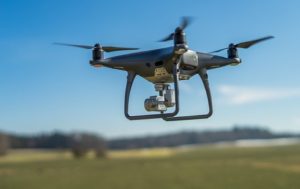
The letter asks U.S. DOT Secretary Elaine Chao and Federal Aviation Administration (FAA) Administrator Steve Dickson to make sure that the rule is released as planned by the end of the year, calling the release of Remote ID “critical to advance the safety and security of the national airspace and maintain U.S. leadership in UAS innovation.”
The letter went on to note that the rule should be performance based, stating, “Given our broad scope of stakeholders across many sectors of our economy, we understand the importance of allowing UAS technology to evolve and grow, and not to have growth hindered by prescriptive regulatory requirements. As such, we also urge the Department to support a final rule that sets performance requirements, rather that specifying particular solutions for Remote ID compliance.”
Despite the current COVID crisis, the drone industry has demonstrated significant growth over the last year. Record-breaking investment, commercial contracts, and steps forward on drone delivery are bringing significant momentum to the sector. “Timely action from the DOT is necessary for the UAS industry to continue innovating and growing, and industry is looking towards Secretary Chao and Administrator Dickson for their leadership in delivering a final, performance based rule in December of 2020,” says the release.
The full text of the letter is below.
September 28, 2020
The Honorable Elaine Chao Secretary
U.S. Department of Transportation 1200 New Jersey Ave SE Washington, DC 20590
Dear Secretary Chao:
On behalf of the undersigned organizations, we urge the Department of Transportation (DOT) to continue supporting the Federal Aviation Administration (FAA)’s intended timeline to publish the final rule on Remote Identification (ID) for unmanned aerial systems (UAS) without any further delays. FAA Administrator Steve Dickson recently noted at the FAA UAS Symposium that the final rule is on track for a December 2020 release, which is critical to advance the safety and security of the national airspace and maintain U.S. leadership in UAS innovation.
Given our broad scope of stakeholders across many sectors of our economy, we understand the importance of allowing UAS technology to evolve and grow, and not to have growth hindered by prescriptive regulatory requirements. As such, we also urge the Department to support a final rule that sets performance requirements, rather than specifying particular solutions for Remote ID compliance. We, along with many other stakeholders in the UAS ecosystem, provided detailed, thoughtful comments on the rule. We all provided suggestions on minor changes that would make a final rule better for the UAS stakeholder community, but none are so substantial as to trigger a Supplemental NPRM. We hope these changes have been considered.
Remote ID standards would serve as the linchpin needed for future rulemaking to pave the way for transformative uses of UAS with significant benefits for our economy and society. Additionally, establishing Remote ID standards would increase the safety and security of the airspace by allowing authorities to identify UAS in real time. Rapid adoption of Remote ID would be critical in driving public acceptance of UAS, answer legitimate security concerns raised by law enforcement and security agencies, and help pave the way for expanded and more complex operations, which given the COVID-19 pandemic, are needed now more than ever. Finally, Remote ID is instrumental to the development of a UAS Traffic Management (UTM) system that works alongside our existing air traffic control system for manned aircraft.
We appreciate the leadership you have shown on this issue, and we stand ready to continue partnering with you and the FAA to help move the unmanned industry forward.
Sincerely,
Association for Unmanned Vehicle Systems International Consumer Technology Association
U.S. Chamber’s Technology Engagement Center
Miriam McNabb is the Editor-in-Chief of DRONELIFE and CEO of JobForDrones, a professional drone services marketplace, and a fascinated observer of the emerging drone industry and the regulatory environment for drones. Miriam has penned over 3,000 articles focused on the commercial drone space and is an international speaker and recognized figure in the industry. Miriam has a degree from the University of Chicago and over 20 years of experience in high tech sales and marketing for new technologies.
For drone industry consulting or writing, Email Miriam.
TWITTER:@spaldingbarker
Subscribe to DroneLife here.